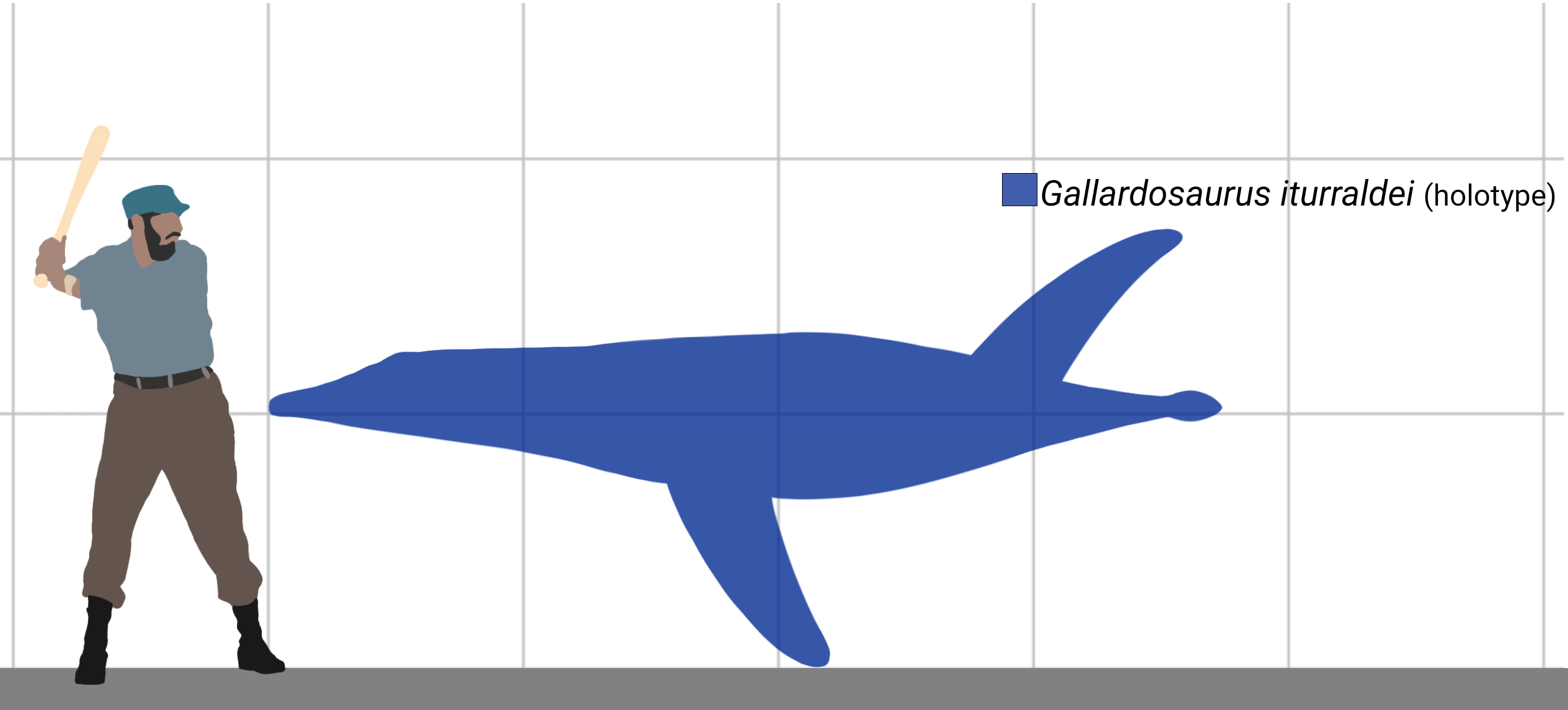HOME | DD
 Paleogalli — Gallardosaurus iturraldei size chart
Paleogalli — Gallardosaurus iturraldei size chart

#cuba #plesiosauria #pliosauridae #peloneustes #gallardosaurus #pliosauroidea #sauropterygia #fidel_castro
Published: 2023-08-28 00:44:28 +0000 UTC; Views: 2626; Favourites: 18; Downloads: 0
Redirect to original
Description
The specimen in question (MNHNCu P3005) is a partial skull and mandible and four cervical vertebrae (atlas to fourth cervical). The specimen was initially attributed to Peloneustes sp., but was later named as Gallardosaurus iturraldei.
Gallardosaurus belongs to the late Jurassic Jagua Vieja Member of the Jagua Formation, Cuba. This member, whose coastline was close to the depositional center (as indicated by a fossil of a sauropod and a turtle, as well as two pterosaurs), represents a shallow-water marine environment (probably the greatest depths did not exceed 10-12 meters). The fish (those that ichthyologists study, such as the pycnodonts, which, in this case, inhabited the deeper waters) were capable of sustaining longnecked plesiosaurs, thalattosuchians, ichthyosaurs and our Gallardosaurus, which was the top predator.
Human to scale is Fidel Castro.
References:
Andrews, C. W. 1913. A descriptive catalogue of the marine reptiles of the
Oxford Clay, Part 2. British Museum (Natural History), London.
Gasparini, Z. 2009. A new Oxfordian pliosaurid (Plesiosauria, Pliosauridae) in the Caribbean seaway. Palaeontology.
Gasparini, Z.; Iturralde-Vinent, M. 2006. The Cuban Oxfordian herpetofauna in the
Caribbean Seaway. Neues Jahrbuch für Geologie und Palaöntologie.
Ketchum, H.; Benson, R. 2011. The cranial anatomy and taxonomy of Peloneustes philarchus (Sauropterygia, Pliosauridae) from the Peterborough Member (Callovian, Middle Jurassic) of the United Kingdom. Palaeontology.


























